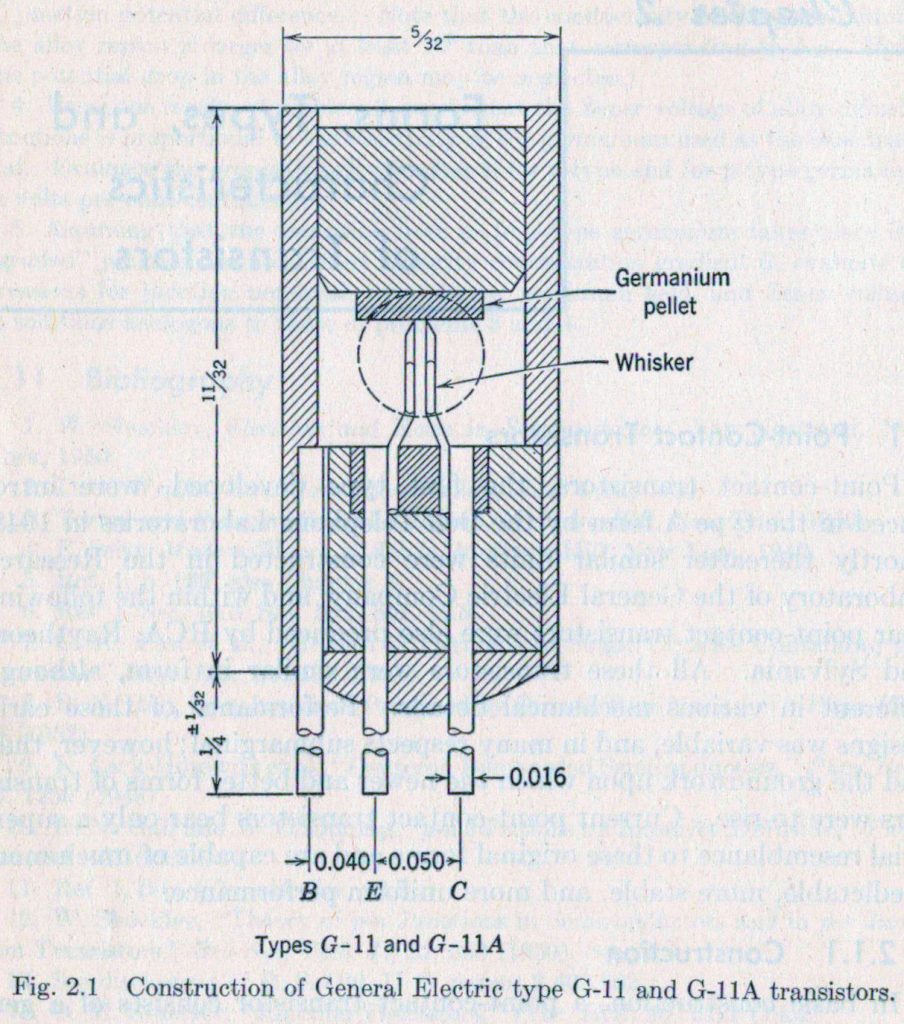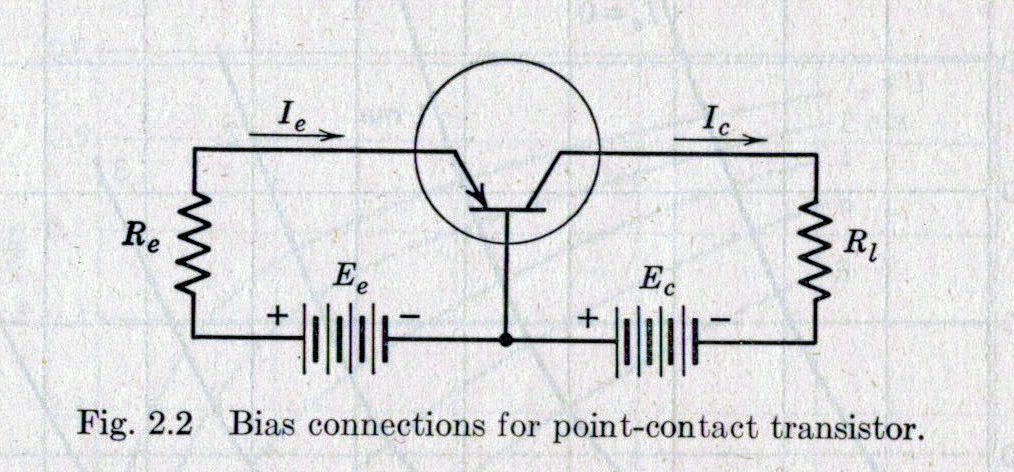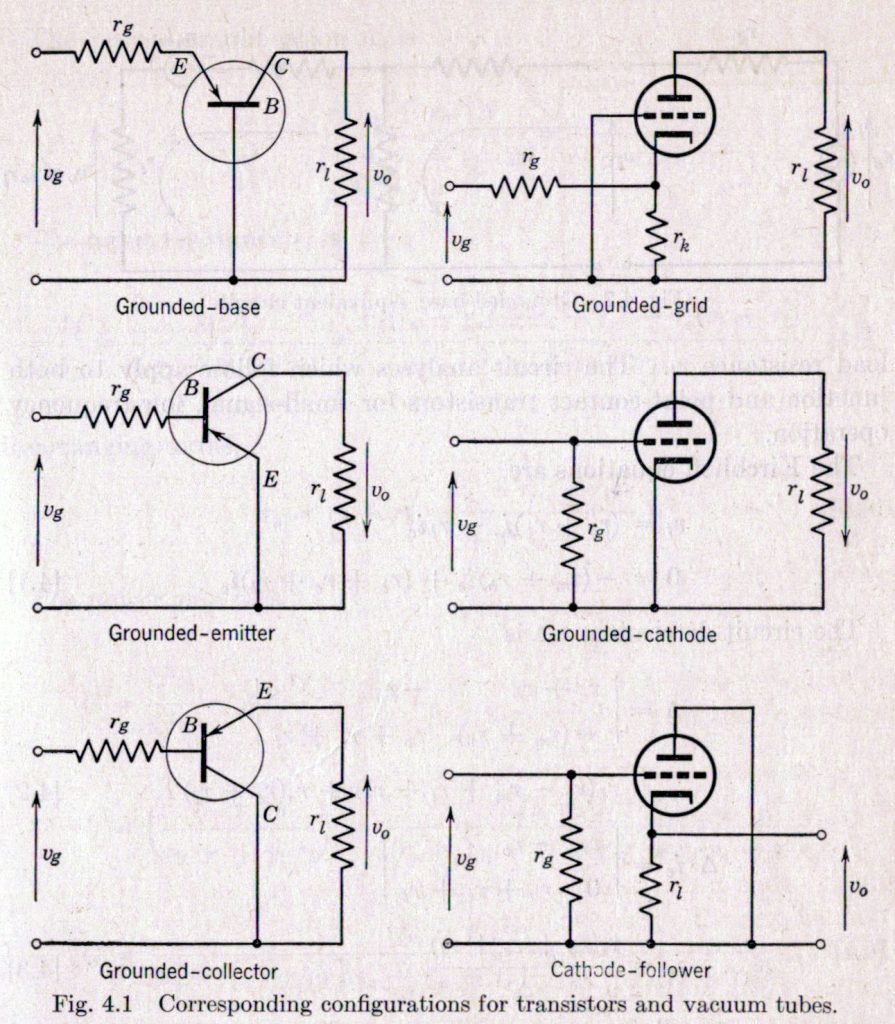Having survived World War II, a difficult emigration to the United States, a rat- and bug-infested apartment, and numerous job rejections, Edward Keonjian was finally working at the cutting edge of electronics for 1953. He was a development engineer at the Semiconductor Applications Unit of the General Electric (GE) Electronics Laboratory in Syracuse, New York and had just co-published a book titled Principles of Transistor Circuits with eight other authors. The book was edited by the Semiconductor Applications Unit’s manager, Richard Shea, and it encapsulated everything that GE knew about how transistors worked and how best to use them in circuits.
I recently purchased a copy of this book, which served the industry as a reference for many years. (My used copy of the book once belonged to William Donaldson Penn, who was a registered professional engineer in Dallas, Texas; an Assistant Professor of Electrical Engineering at Southern Methodist University; and a consultant or employee for Vacolite, an early electronic hearing aid maker. Penn embossed his Professional Engineering stamp on the book’s cover page.)
The book is quite a time capsule. First, it discusses the two types of transistors available in 1953: the original point-contact transistor, developed by research scientists John Bardeen and Walter Brattain at Bell Labs in late 1947, and the junction transistor, developed a year later by William Shockley, also at Bell Labs. The book takes as a given that these transistors are made from germanium. That was the only semiconductor material used to make transistors at the time. Silicon transistors would not become available for a few more years.
Here’s some of the transistor’s history from the book:
“Point-contact transistors, the first type developed, were introduced in the Type A form by the Bell Telephone Laboratories in 1948. Shortly thereafter, similar units were constructed in the Research Laboratory of the General Electric Company, and within the following year point-contact transistors were also produced by RCA, Raytheon, and Sylvania. All these transistors were similar in form, although different in various mechanical details. Performance of these early designs was variable, and in many respects submarginal; however they laid the groundwork upon which the newer and better forms of transistors were to rise. Current point-contact transistors bear only a superficial resemblance to these original forms and are capable of much more predictable, more stable, and more uniform performance.”
By those words, I can tell that this book was written in the very earliest days of the transistor era, when transistors were not reliable, stable, or consistent from one transistor to the next. The book also provides an illustration of a GE type G-11 point-contact transistor, which immediately cleared up a question I’ve pondered for quite a while. Here’s the illustration from chapter 2 of Principles of Transistor Circuits:

Point-contact transistor construction circa 1953. Image credit: Principles of Transistor Circuits, John Wiley and Sons
From this illustration, you can see that the transistor’s base is electrically and mechanically bonded to the metal case. If you are accustomed to looking at cross sectional drawings of more modern, diffused, planar transistors, you likely expect the transistor’s collector to be bonded to the metal case. The ramifications of this difference started to tug at my mind, but the image on the book’s next page brought things into focus:

Point-contact transistor construction circa 1953. Image credit: Principles of Transistor Circuits, John Wiley and Sons
The PNP transistor in the illustration above is essentially shown in a grounded-base configuration, which makes plenty of sense if the transistor’s base is electrically connected to its case. This image had a secondary effect on me. I knew I’d seen it decades before, even though I only recently purchased a used copy of this 70-year-old book. I suspect many of this book’s illustrations were either used or closely copied for the National Technical School’s correspondence courses in electronics that I studied during my high school years, even though I took those courses more than 15 years after this book was published. I think this explains why I saw so many grounded-base schematics in my earliest electronics training.
To further confirm my suspicions, take a look at this illustration from a later chapter in Principles of Transistor Circuits, which shows the three different transistor amplifier configurations (grounded-base,-emitter, and -collector) and their corresponding tube amplifier configurations:

Transistor amplifier configurations. Image credit: Principles of Transistor Circuits, John Wiley and Sons
Note that the grounded-base configuration comes first. Also note the tube-amplifier equivalents. In 1953, most electrical engineers would have been far more familiar with tube circuits than transistor circuits, so I’m fairly certain that engineering readers of this book, reading it in 1953, would find the tube-based circuit analogies helpful.
After working at GE’s Electronics Laboratory and living in Syracuse for several years, Keonjian and his wife started longing for life back in New York City. Also, they’d tired of the several feet of snow that accumulated on the streets of Syracuse between December and March every year. Keonjian’s long-time manager, Richard Shea, had decided to move to the Knolls Atomic Power Lab in Niskayuna, New York, which gave Keonjian even more reason to leave GE.
Keonjian applied for a job at IBM, another large New York employer. With his status as one of the world’s foremost experts in transistor applications, he should have received a job offer. However, the chief of personnel at IBM rejected Keonjian’s application because no one at IBM knew him. He handed Keonjian a copy of IBM’s Think magazine, the May 1956 issue, and suggested that Keonjian familiarize himself with the company. By odd coincidence, that issue of Think included a photograph of Keonjian holding a solar-powered, 100 mW radio transmitter that he’d designed at GE. Keonjian got IBM’s message – he wasn’t welcome – and applied elsewhere.
Then, Keonjian heard that American Bosch Arma was looking for a senior engineer to help design the inertial guidance computer for an intercontinental ballistic missile (ICBM). It was an attractive position for Keonjian and, best of all, American Bosch Arma was based in Garden City on Long Island. New York City would be a short train ride away.
Perhaps you’re not familiar with American Bosch Arma. I wasn’t. The company formed in 1949 with the merger of American Bosch and a New York defense electronics firm named Arma. Robert Bosch, founder of Bosch Magneto Company of Germany, also founded American Bosch in 1906. During World War II, the engines in virtually every US-built warplane, battleship, aircraft carrier, destroyer, and submarine used American Bosch magnetos or fuel injectors. Arma had been founded in Brooklyn, New York, in 1918. Initially, the company manufactured military searchlights but they then started designing and manufacturing electro-mechanical gunfire control systems (gun directors) for US naval vessels. These were analog systems based on synchros. After World War II, Arma designed and manufactured the gunfire control system for the B-52 bomber’s tail-gun turret.
During the 1950s, missile guidance systems became all the rage, and American Bosch Arma won the contract to develop an inertial guidance system for the Titan missile, which would be the United States’s second ICBM. If the jump from gunfire control systems to inertial guidance systems seems like a big leap, consider that the essential mechanical components of an early inertial guidance system – pendulums, accelerometers, and gyroscopes – required the same sort of mechanical precision and the same skilled machinists who made gun directors. The electronics required were a different matter.
The electronic aspects of the missile guidance project drew Keonjian to American Bosch Arma. The company had completed the project’s design stage so quickly that it was reassigned as a retrofit to the Atlas missile system, the United States’s first ICBM. Initially, the Atlas and Titan ICBMs were destined to lob nuclear warheads across oceans and continents. NASA later repurposed the Atlas and Titan missiles, transforming them into rocket boosters for the US manned space program’s Project Mercury and Project Gemini space capsules, respectively.
Keonjian left GE and joined the Computer Section of American Bosch Arma as a Senior Engineer in 1957. He focused on the development of miniaturized electronics needed by these missile guidance systems, with an emphasis on lower weight, lower power, and improved reliability. As one of the country’s top transistor applications experts, thanks to his experience at GE, Keonjian fit the role perfectly.
By 1959, Keonjian was fully engaged in the world of miniaturization and was ready to approach semiconductor companies including Fairchild and Texas Instruments with his ideas. The solid-state revolution was ready to make its next leap, from transistors to integrated circuits, and Keonjian had a role to play.
References
Edward Keonjian, Survived to Tell, Sunstone Press, 1997
ARMA Division, American Bosch ARMA Corporation, ATLAS Base Activation 1960-1965
Edward J. Keonjian and John D. Schmidt, “Ring Modulator Reads Low-Level DC,” Electronic Industries, pp 86-89





